Chabówka 2022-01-11
Steam locomotive Tp4.
The locomotive, which in Poland has the designation Tp4, is a Prussian design and production of the G8¹ series, intended for freight trains. The layout of the D axis, that is (0-4-0), and in Poland it is marked with a lower case letter "p". Steam locomotives of this type were produced in the period 1913-1921.
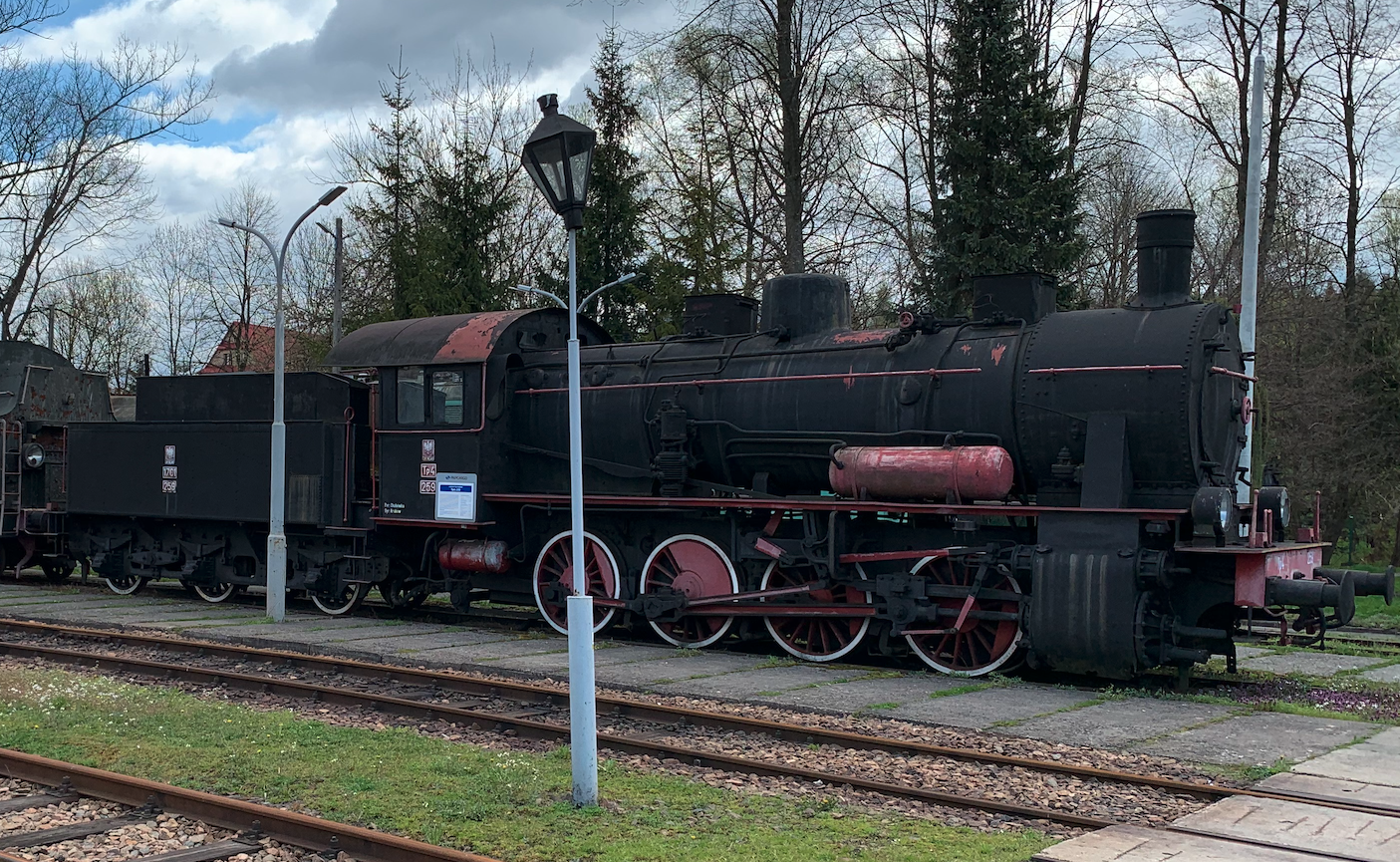
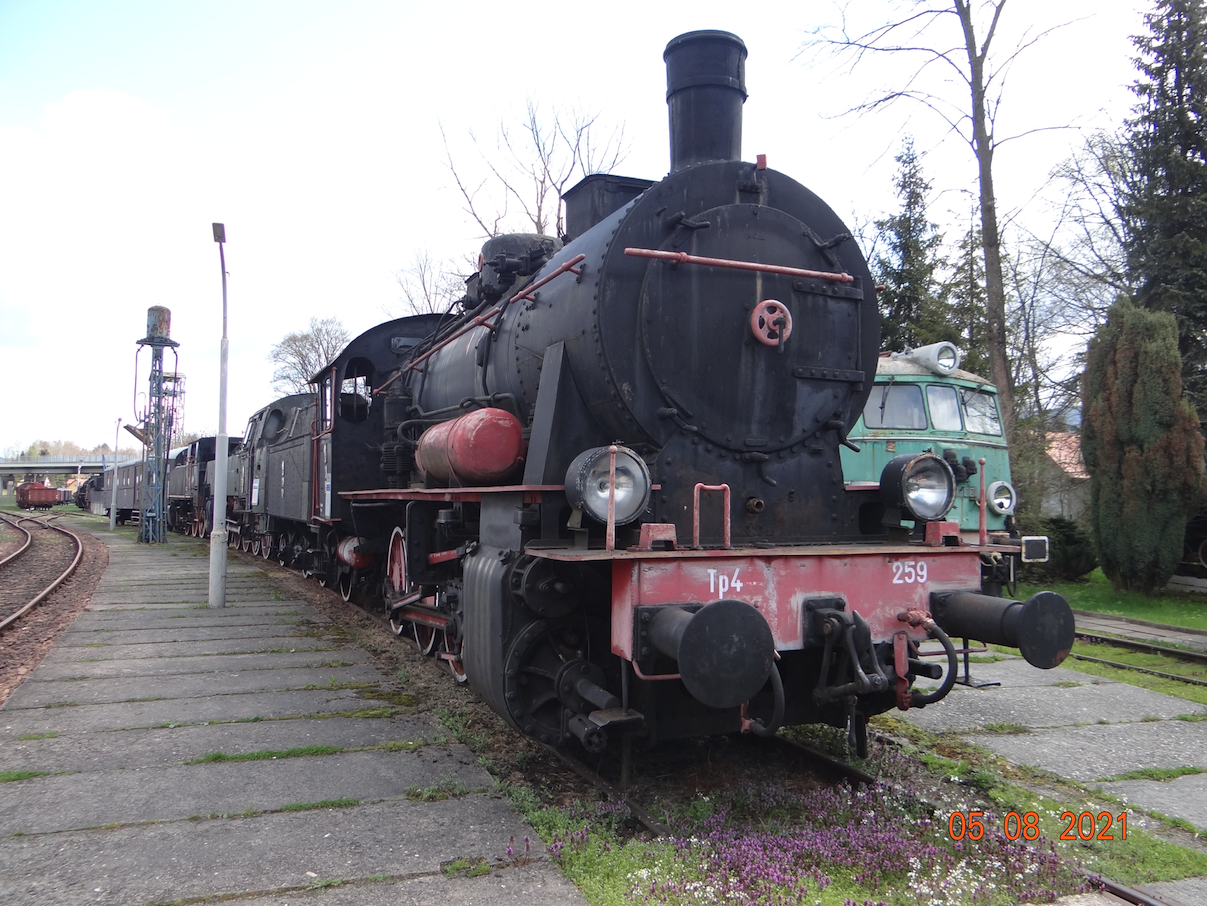
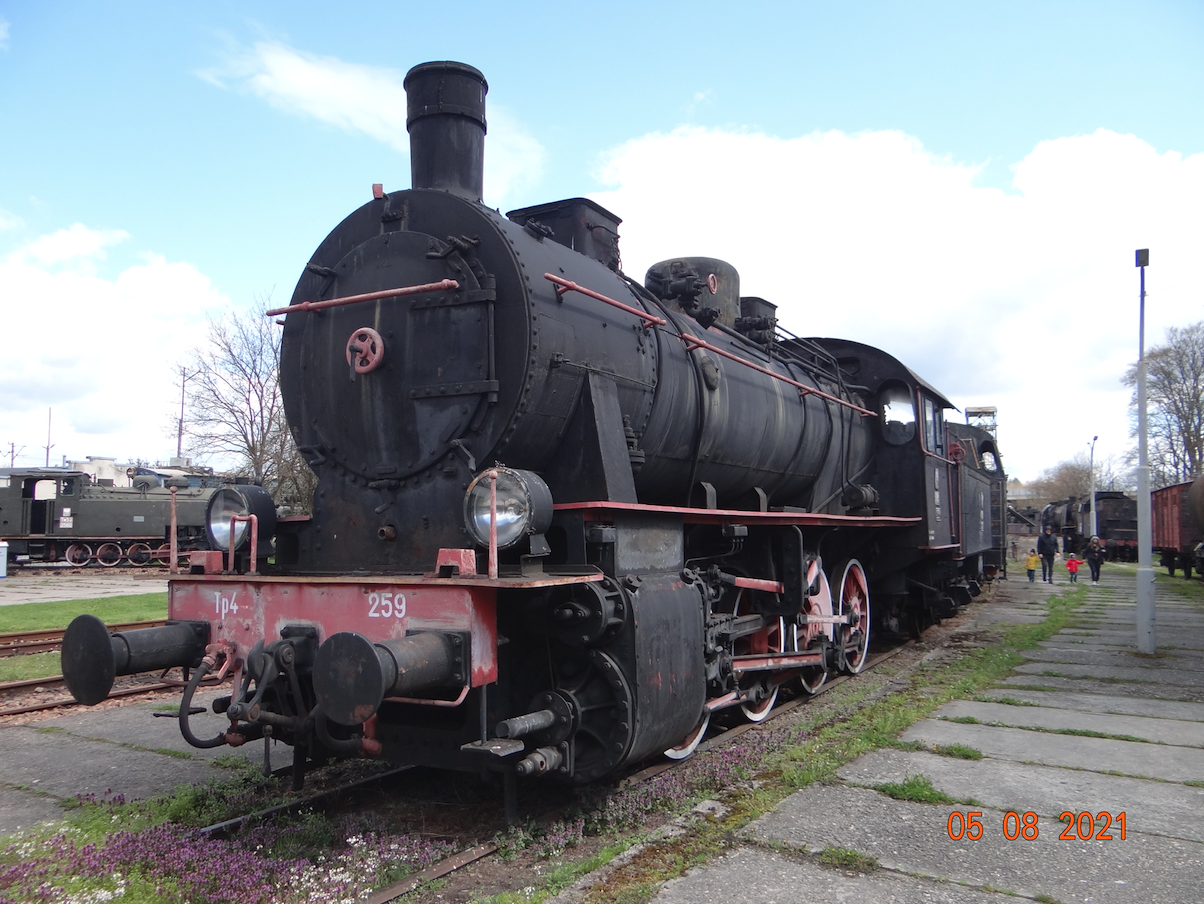
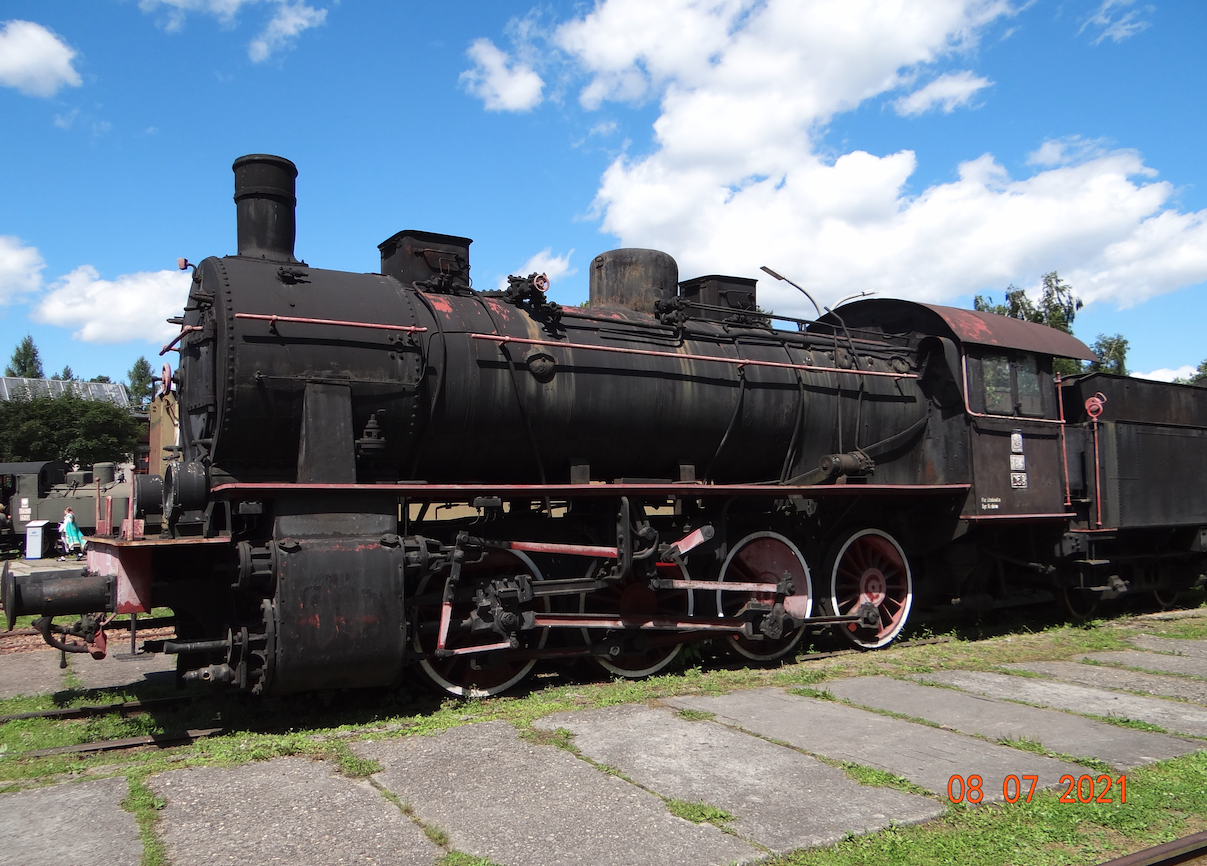
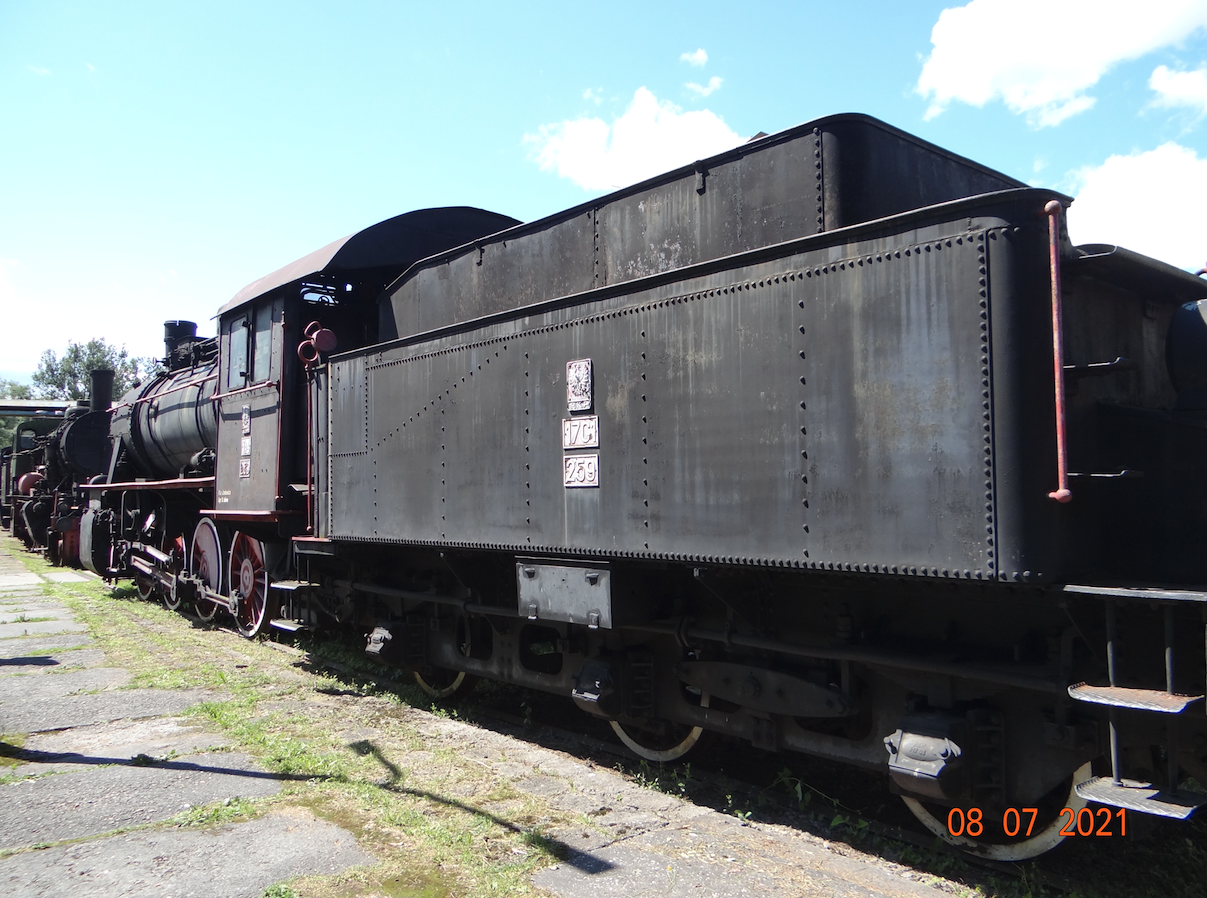
The G8¹ series steam locomotives were the most numerous and successful series of Prussian steam locomotives. It was the last Prussian freight steam locomotive without a front rolling axle or a bogie, which made it easier for the locomotive to fit into the curves and allowed for higher running speed. Due to the shifting of the axes to the sides, the locomotive covered bends with a radius of up to 100 m. Compared to its predecessors, the steam locomotive has a much larger boiler, superheater, and the pressure in the boiler was increased to 14 atm (at). The locomotive is longer than its predecessors. The wheelbase of the driving axles was increased to 4.70 m. The wheel diameters were increased to 1.35 m. The subsequent versions of the locomotives received new equipment and electrical installations. A typical 17C1 tender holds 16.5 m3 of water and 7 tonnes of coal.
The G8 series locomotives were produced in Prussia and in the Prussian partition. About 5,000 copies were built in total. Prussian Railways received 4,948 locomotives of the G8 series. After the Great World War, the locomotives were delivered to France, Belgium and Poland as war reparations. After 1918, the Polish State Railways received 459 (other sources say 462) copies. Additionally, Poland ordered 50 new locomotives.
The Tp4 locomotive was strong and could pull a train weighing up to 1,050 tons at a maximum speed of 55 km / h. Due to the large mass of the locomotive, it was intended for the main routes. Until 1930, the Tp4 and other locomotives (Tr20, Tr21, Tw1, Tw11, Tw12) were the basic locomotives used in the Polish State Railways. They were gradually replaced by Ty23 locomotives. After the Second World War, in 1945, Poland had 288 Tp4 locomotives, but only a few were those used by the Polish State Railways before the war. Due to technical progress, the Tp4 locomotives were slow and weak. Therefore, they were moved to work as heavy shunting locomotives, where they worked for many years. From 1970, the Tp4 locomotives were gradually decommissioned. They were bought by workplaces that had their own large sidings. The last locomotives: Tp4-148 and Tp4-217 were withdrawn in 1985. Until now (2022), several Tp4 steam locomotives have survived: Tp4-148 and Tp4-217 belonging to the Railway Museum in Warsaw (Museum Station), and Tp4-259 in Chabówka.
Steam locomotive Tp4-259.
In 1945, the locomotive received the designation Tp4-259 and was sent to work in DOKP Wrocław in the engine depots: Lubań, Brzeg, Miłkowice and Jaworzyna Śląska. it was withdrawn from service in 1972. the locomotive was rebuilt in 1995 in the Chabówka open-air museum.
T-T data of the Tp4 steam locomotive:
Years of production 1913 - 1921. The D axis system, i.e. (0-4-0). Service weight 69,900 kg. Length 10.88 m. Length with tender 18.29 m. Type tendra 17C1. The diameter of the driving wheels is 1.35 m. The heating area of the boiler is 140.5 m2. Superheater heating area of 46 m2. Grate area 2.66 m2. Design speed 55 km / h.
Written by Karol Placha Hetman
